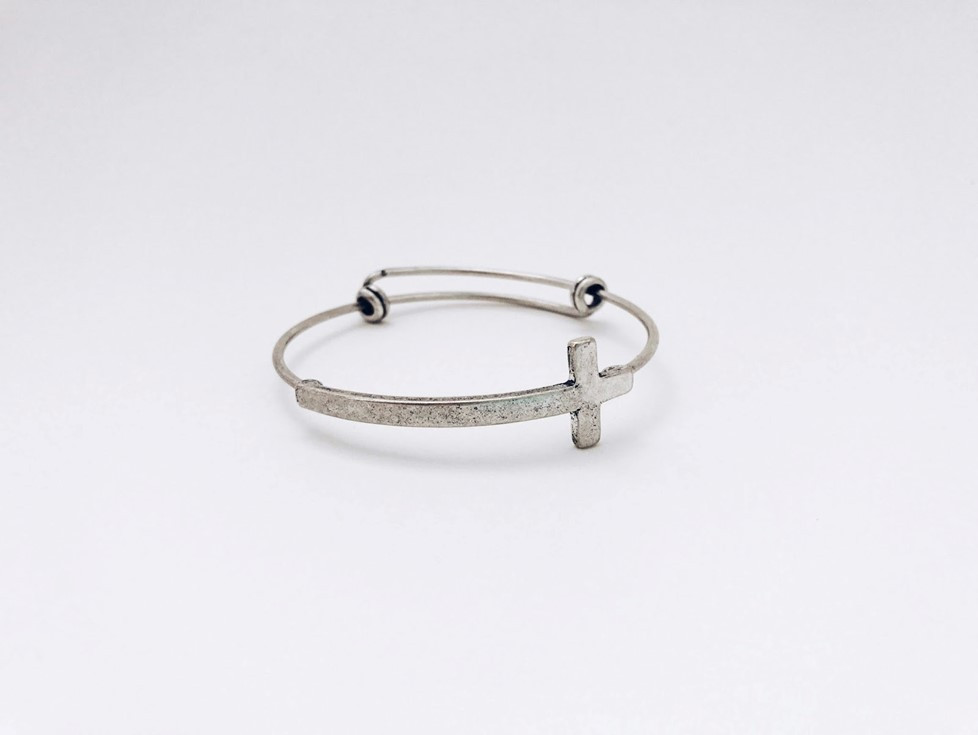
Medical alert bracelets and medical ID bracelets are important tools that can help save lives. While they may seem similar, understanding the differences between them is crucial, especially in emergencies. In this article, we'll explore what sets these two types of bracelets apart, starting with defining each one.
What is a Medical Alert Bracelet?
A medical alert bracelet is designed to provide immediate information about a person's health condition during emergencies. These bracelets are crucial in situations where someone cannot communicate their medical needs.
Primary Functions:
- Alerts medical professionals to critical health issues like allergies, diabetes, heart conditions, or epilepsy.
- Often has a noticeable design to attract attention quickly.
Common Situations for Use:
- Severe allergic reactions
- Diabetes management
- Seizure disorders
- Heart conditions
Medical alert bracelets can be life-saving. According to the Mayo Clinic, these tools can assist first responders in delivering timely and appropriate care.
These bracelets usually include:
- Medical conditions
- Allergies
- Emergency contact numbers
- Any medication being taken
By wearing a medical alert bracelet, individuals ensure that they receive the right help when they cannot speak for themselves.
- Advisory firm pushes for tech-driven agric to boost food security
- Re-imagining the workplace: Corruption of military manning State House is scary
- Model for Entrepreneurship Part 4
- Re-imagining the workplace: Today we attempt to define happiness
Keep Reading
What is a Medical ID Bracelet?
A medical ID bracelet shares some similarities with a medical alert bracelet, but there are key differences.
Primary Purpose:
- Provides detailed information about the wearer's medical history, including chronic conditions, medications, and emergency contacts.
Key Features:
- Usually less conspicuous than medical alert bracelets.
- Contains comprehensive health information engraved or stored in a digital format.
Examples of Information Included:
- Full name
- Blood type
- Specific medical conditions (e.g., asthma, diabetes)
- Current medications
- Emergency contacts
Both types of bracelets serve vital roles but are suited for different needs and scenarios. In the following sections, we will delve deeper into their differences and guide you on how to choose the best medical ID bracelets and medical alert bracelets for your lifestyle.
Key Differences Between Medical Alert Bracelets and Medical ID Bracelets

Understanding the differences between medical alert bracelets and medical ID bracelets can help you choose the right one for your needs. Here’s a breakdown:
- Primary Usage and Function:
- Medical Alert Bracelet: Actively alerts emergency services or nearby individuals when an emergency occurs. Often equipped with a button to trigger an alert.
- Medical ID Bracelet: Provides important health information to first responders or medical personnel but does not actively alert anyone.
- Types of Information Included:
- Medical Alert Bracelet: Emergency contacts, critical medical conditions, and instructions for emergency response.
- Medical ID Bracelet: Detailed medical history, medication information, allergies, and other health considerations.
- Design and Style Variations:
- Medical Alert Bracelet: May feature buttons or electronic components. Typically less customizable in terms of appearance.
- Medical ID Bracelet: Available in various styles and materials. More focused on aesthetic appeal while still providing essential information.
- Situations Beneficial:
- Medical Alert Bracelet: Ideal for individuals who might need immediate medical intervention, such as those prone to seizures or severe allergic reactions.
- Medical ID Bracelet: Better suited for individuals who need their medical information readily available without requiring immediate alerts, like those with chronic conditions managed by medication.
Using this guide, you can identify which type of medical bracelet best suits your specific health and lifestyle needs.
Best Medical ID Bracelets: What to Look For
Choosing the best medical ID bracelet involves understanding your specific needs and preferences while ensuring the bracelet provides essential medical information. Here are important factors to consider:
- Durability and Material
- Choose materials that are long-lasting and suitable for daily wear, such as stainless steel, silicone, or titanium.
- Ensure the bracelet can withstand daily activities, especially if you have an active lifestyle.
- Clarity of Engraving
- Opt for bracelets with clear and easy-to-read engravings to ensure first responders can quickly access your medical information.
- Look for options that offer laser engraving, which tends to be more durable and legible.
- Customization Options
- Ensure the bracelet can be personalized with your specific medical information, such as allergies, medical conditions, and emergency contact numbers.
- Some brands offer multiple lines of engraving, which can be useful for adding more comprehensive details.
- Comfort and Design
- Select a bracelet that is comfortable to wear, especially if you plan on wearing it 24/7.
- Consider styles that suit your everyday look, whether that includes more traditional metal bracelets or colorful, fun designs.
For further insights on choosing the right medical ID bracelet, check out this Healthline article.
Medical Bracelets for Different Lifestyles

Medical bracelets should cater to different lifestyles to be both effective and practical. Here are some considerations:
- Active Lifestyles
- Look for waterproof and durable options to withstand rigorous activities.
- Consider silicone or rubber bracelets that are flexible and sweat-resistant.
For Specific Age Groups
- For Children
- Choose fun and engaging designs with bright colors or favorite cartoon characters to encourage children to wear them.
- Ensure the bracelet is adjustable to fit as the child grows.
- For the Elderly
- Select options with large, easy-to-read text that can be read even with declining vision.
- Lightweight and comfortable bracelets are essential as elderly individuals might wear them continuously.
The National Institute of Health discusses various personalization options and their benefits according to user needs in this insightful NIH report.
By paying attention to these tips, you can select a medical ID bracelet that suits your lifestyle while providing vital information in emergencies.
Innovative Medical Watch Strap Charms and Medical ID for Watch Bands
Medical IDs have evolved significantly, and one of the latest trends is integrating these IDs with everyday tech. Medical watch strap charms and medical IDs for watch bands offer a discreet and stylish way to stay safe.
Key Features of Medical Watch Strap Charms and Watch Bands
- Discreet and Stylish: These charms blend seamlessly with regular watch straps, offering a subtle yet effective way to carry important medical information.
- Easy to Update: Unlike traditional bracelets, medical watch strap charms can be easier to update as your medical information changes.
- Compatibility: They fit on various watch types, including smartwatches and traditional watches.
Benefits of Medical Watch Strap Charms and Watch Bands
- Integrated Medical ID: Combines the functionality of a medical alert bracelet with the everyday use of a watch.
- Convenience: You don't need a separate bracelet, which is particularly useful for people who prefer minimal accessories.
- Customizable: Many brands offer options to personalize these charms with your specific medical information.
Recommended Products
- MyID Stretch Medical ID for Apple Watch: This product is designed to fit Apple Watch bands and comes with customizable engravings for essential medical information.
- Road iD Medical ID Tag: Compatible with a wide range of fitness tracker bands and traditional watches, Road iD offers various styles and engraving options.
Medical Alert Bracelets and Technology Integration
Key Technological Features
- GPS Tracking: Enables location tracking, which is crucial for elderly individuals or those with cognitive impairments.
- Emergency Response Integration: Some bracelets can directly connect to emergency services, allowing for immediate assistance.
- Smart Notifications: Syncs with smartphones to send alerts to caregivers or family members in case of an emergency.
Benefits of Technologically Integrated Medical Alert Bracelets
- Enhanced Safety: Features like GPS tracking and emergency response can provide an added layer of security.
- Convenience: Smart notifications keep caregivers informed without the need for constant check-ins.
- Peace of Mind: Both users and their loved ones can feel more at ease knowing help is readily available.
Examples of Leading Products
- LifeFone: Offers a range of medical alert bracelets with GPS and emergency response features.
- Medical Guardian: Their smart medical alert devices provide real-time updates and notifications for increased safety.
By choosing the right medical bracelet, you can ensure that your medical information is always accessible when needed. Whether you opt for a traditional bracelet or a tech-integrated option, the goal is to enhance safety and peace of mind.











